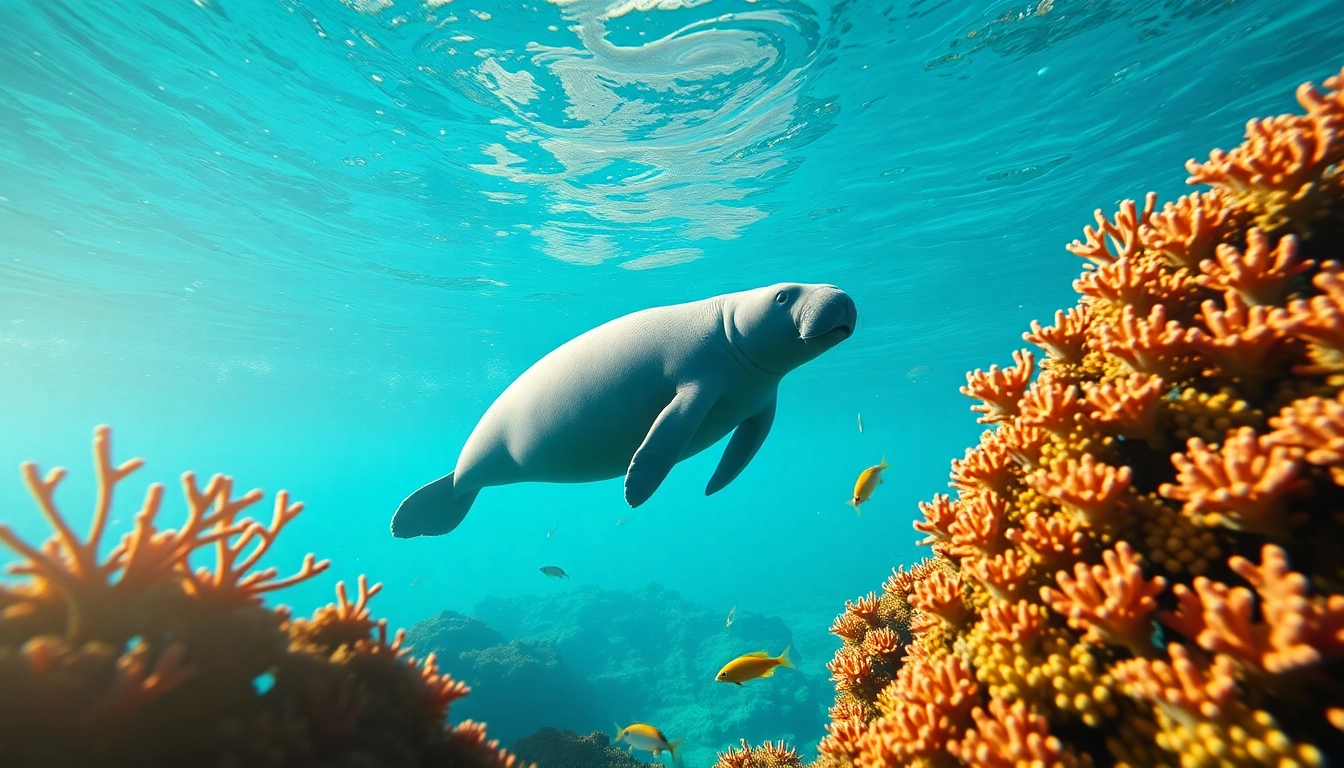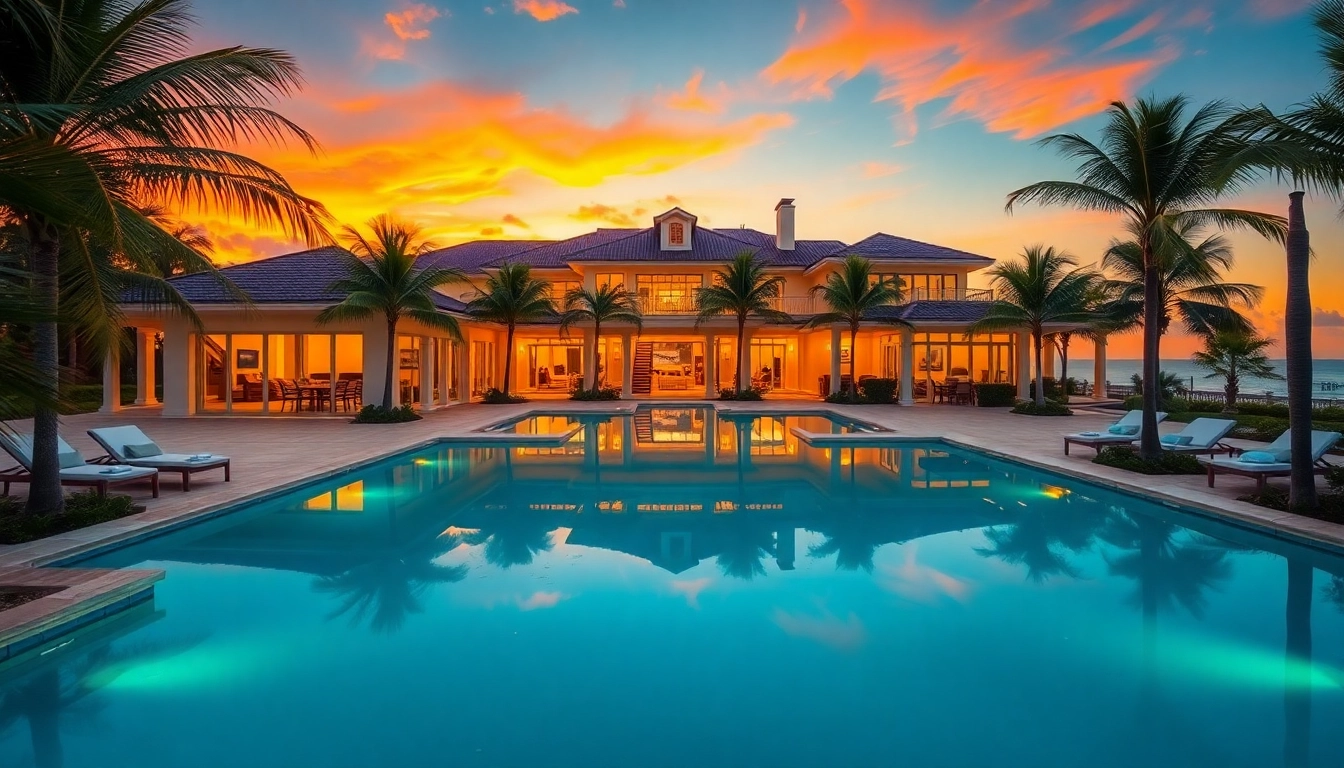Understanding Manatees Puerto Rico
In the tropical waters of Puerto Rico, a gentle giant of the sea graces the coastlines—the manatee. Known for their slow-moving, herbivorous nature, these marine mammals hold a unique charm that attracts both locals and tourists alike. More than just a sight to behold, manatees puerto rico represent an essential component of the island’s marine ecosystem. In this comprehensive guide, we will delve into their species characteristics, habitats, vital ecological roles, conservation efforts, and how to experience these extraordinary creatures firsthand.
Overview of Manatee Species
Manatees belong to the family Trichechidae and are divided into three species: the West Indian manatee, the Amazonian manatee, and the West African manatee. The species found in Puerto Rico is primarily the West Indian manatee (Trichechus manatus). These gentle giants can grow up to 13 feet long and weigh as much as 1,300 pounds. Manatees are characterized by their large, paddle-like flippers and a distinctive, rounded snout.
Known for their docile nature, manatees feed almost exclusively on aquatic vegetation, including seagrass and algae, which they graze from the ocean floor. Their slow metabolism requires them to consume around 10-15% of their body weight daily. This grazing behavior plays a crucial role in maintaining the health of seagrass beds, contributing to the overall health of their marine ecosystem.
Habitat and Distribution in Puerto Rico
In Puerto Rico, manatees inhabit shallow coastal areas, estuaries, and lagoons abundant with seagrass beds. The most significant populations are typically found in the southern coastal waters, notably around the La Parguera region, the shallow bays of Fajardo, and the enchanting mangrove channels. These areas provide essential food sources and resting spots for manatees, making them ideal environments for observation.
The presence of manatees in Puerto Rico reflects the health of marine habitats, as these creatures are sensitive to environmental changes. Their migratory patterns may shift based due to temperature changes and availability of food sources, reflecting the vital relationship they have with their habitat.
Importance of Manatees in Marine Ecosystems
Manatees play a crucial role in their ecosystems, primarily by grazing on seagrasses and other aquatic plants. This grazing behavior not only supports their nutritional needs but also encourages growth and health of seagrass beds, which are essential for numerous marine species. By maintaining seagrass health, manatees indirectly support fish populations that rely on these habitats for spawning and nursery grounds.
Furthermore, manatees contribute to nutrient cycling within their marine environments. Their grazing promotes sediment turnover, allowing for better light penetration, which benefits aquatic plants and increases photosynthesis. In essence, the activities of manatees facilitate a balanced and thriving ecosystem.
Best Locations to See Manatees Puerto Rico
For enthusiasts eager to spot these magnificent creatures, there are several prime locations in Puerto Rico where manatees can be observed in their natural habitat.
Top Spots for Viewing Manatees Puerto Rico
1. La Parguera: This area is renowned for its clear waters, seagrass beds, and diverse marine life. The tranquil waters make it an excellent choice for manatee spotting, particularly around the mangrove channels.
2. Fajardo: The lagoons of Fajardo are another hotspot for manatee sightings. Kayaking through the mangroves presents an opportunity for close encounters with these gentle giants.
3. Condado Lagoon: Located near the bustling San Juan, this lagoon offers a unique blend of urban and natural settings. Paddleboarding is popular here, with many reports of manatees surfacing to take a breath.
4. Jobos Bay National Estuarine Research Reserve: This reserve serves as a protected environment for various marine life, including manatees. The area is less crowded, providing a peaceful setting for viewing.
Kayaking and Paddleboarding Opportunities
One of the most exhilarating ways to see manatees in Puerto Rico is by kayaking or paddleboarding through their habitats. With the wind in your hair and the sun on your back, you can peacefully glide through the waters without startling these gentle creatures.
Kayaking tours in areas like La Parguera and Fajardo often provide guided experiences where visitors learn about local wildlife, marine ecosystems, and conservation efforts while having the opportunity to encounter manatees up close.
Common Viewing Guidelines for Observers
To ensure both the safety of the manatees and the best viewing experience, observers should adhere to some common guidelines:
- Maintain a respectful distance—approach no closer than 10 feet.
- Avoid sudden movements or loud noises that may frighten manatees.
- Do not chase or corner manatees; allow them to surface naturally.
- Follow local regulations and guidelines regarding manatee watching to promote their conservation.
By practicing these guidelines, individuals can ensure they appreciate manatees while safeguarding their well-being.
Conservation Efforts for Manatees Puerto Rico
The conservation of manatees in Puerto Rico is critical due to their status as a threatened species. Several organizations and initiatives work diligently to protect these remarkable animals.
Role of Conservation Centers
Puerto Rico is home to several conservation centers dedicated to the protection of manatees. The Caribbean Manatee Conservation Center has been instrumental in rescuing, rehabilitating, and rehabilitating injured or orphaned manatees. This center not only provides essential medical care but also raises awareness about the importance of preserving manatee populations.
These centers often offer guided tours and educational programs, allowing visitors to learn more about the effort to protect manatees and the broader marine ecosystem. Engaging with conservation efforts is pivotal in fostering a collective commitment to protecting these species.
Research and Education Programs
Ongoing research is fundamental to understanding manatee behavior, migratory patterns, and health. Universities and research institutions in Puerto Rico often collaborate on studies assessing manatee populations and their habitats. By collecting data, researchers contribute to informed conservation strategies.
Education programs play a vital role in raising awareness about manatees. From school programs to community events, these initiatives promote understanding of manatee biology, threats they face, and conservation measures. Engaging the public is crucial in creating advocates for the preservation of these endangered creatures.
How to Get Involved with Manatee Conservation
Anyone can partake in the important mission of manatee conservation. Here are some ways to get involved:
- Volunteer at manatee conservation centers to assist with rehabilitation efforts and education programs.
- Participate in local clean-up initiatives to help protect manatee habitats from pollution.
- Support legislation aimed at protecting manatees and their environments.
- Educate peers and share information on social media to spread awareness of conservation efforts.
By taking action, individuals can make a meaningful impact on the future of manatees in Puerto Rico.
Experiencing Manatees Puerto Rico
Observing manatees in their natural habitat is a breathtaking experience. Various tours and adventures offer opportunities to witness these remarkable animals up close.
Guided Tours and Eco-Adventures
Several eco-tour companies offer guided boat tours dedicated to manatee watching. These tours often combine wildlife observation with educational commentary about marine ecosystems, conservation efforts, and the significance of manatees within that framework.
Participating in these excursions allows for safe manatee encounters where guests can appreciate their beauty while learning about the challenges they face.
Snorkeling and Swimming with Manatees
For the adventurous, there are opportunities to snorkel or swim with manatees, notably in areas like La Parguera. Engaging directly with manatees in the water can be an unforgettable experience, allowing for a deeper connection with these creatures.
Such activities are typically offered by certified operators who emphasize safety and respect for wildlife. For anyone considering this experience, it’s essential to choose a reputable tour that adheres to regulations regarding manatee interaction.
What to Expect During Your Visit
When planning a visit to see manatees, it’s important to go in with clear expectations. Generally, manatee sightings may vary based on the time of year, weather conditions, and specific locations. Early mornings or late afternoons are often considered the best times for observation as conditions are generally calmer, increasing visibility.
Visitors should dress comfortably, bring sunscreen, and pack water and snacks for a day out. Moreover, a camera is a must to capture the moments spent with these gentle giants.
Challenges Facing Manatees Puerto Rico
Despite efforts to protect manatees, they face numerous challenges that threaten their populations and habitats.
Threats from Pollution and Habitat Loss
Habitat loss due to coastal development, pollution, and increased boating activity represent significant threats to manatees. Polluted waterways can degrade seagrass beds essential to their survival, while boat strikes are one of the leading causes of manatee injuries and fatalities.
The conversion of wetlands for human use further diminishes manatee habitats, reducing access to food and safe areas for resting.
Impact of Climate Change on Manatee Populations
Climate change poses additional threats to manatee populations by altering their habitats. Increased water temperatures can lead to reduced seagrass growth and change distribution patterns of various aquatic species. Additionally, extreme weather events can damage coastal ecosystems, directly impacting manatee lives.
As climate patterns shift, continuous monitoring and adaptive management strategies will be essential for addressing these changes effectively.
Legislation and Protection Measures
Legal protections for manatees under the Endangered Species Act offer a framework for their preservation. Additionally, local regulations establish speed zones for boats in areas where manatees are commonly found to decrease the risk of collisions.
However, consistent enforcement of these regulations remains crucial, alongside the need for public education on the importance of manatee conservation efforts.



